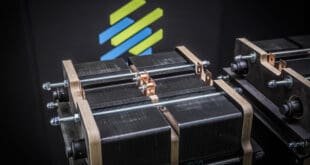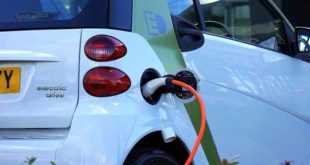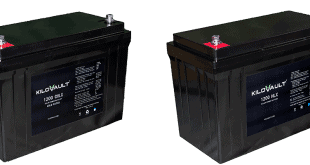Even if California only ends up with 25% renewable electricity within the next decade or two, there is going to be a staggering amount of investment pouring into wind and solar power, and with intermittent sources of energy, massive storage infrastructure is just as necessary as the generating infrastructure. In our analysis of Prop. 7, California’s Proposition 7, the initiative that calls for 50% renewable energy by 2025, we estimated compliance would require about 500 gigawatt-hours of renewable electricity generating capacity per day. For wind power, based on installation costs of $2.5 million per megawatt ($2.5 billion per gigawatt), and yields of 17.5%, this would require a total investment of nearly $300 billion. The estimated total cost for solar, at today’s prices, was considerably higher than this (bear in mind the cost for solar energy is going to drop faster and further than the cost for wind energy in the coming years). But what about the cost for storage infrastructure?
In a perfect world, parked electric cars will harvest intermittant energy – wind at night, solar during mid-day, and release that energy during the demand peak.
In a perfect world, 2nd and 3rd generation smart metering systems at homes will allow everyone’s car to act as a micro utility, an automated fiduciary, purchasing power when the spot price is low and selling power when the spot price is high.
In a perfect world, cars that store 10-50 kilowatt-hours of electricity will buffer intermittent sources, and storage infrastructure requirements will be reduced. Will electric cars proliferate as fast as intermittent generators? Will they always be parked and collecting power at the right times? Apart from electric cars performing this function, how much storage capacity are we going to need?
In California the demand peak is around 50 gigawatts, and the off-peak minimum can get as low as 20 gigawatts. The time of peak demand is between 5 p.m. and 10 p.m., when appliances are operating along with flat screen TVs and PCs. During this period, when the sun is down and the wind yields aren’t yet at maximum output, at least 25% of California’s daily electricity draw is consumed, about 250 gigawatt-hours. It is reasonable to assume most of the renewable energy used to fulfill this demand will have to come from stored wind, and stored solar. So what would it cost to store 100 gigawatt-hours of energy?
Yesterday we had the opportunity to speak briefly with David MacMillan, CEO of Megawatt Storage Farms, Inc., a company that is developing large scale electricity storage using NAS (sodium-sulphur) batteries. He claims that not including site acquisition and preparation, storage technology using NAS batteries would come to about $350,000 per megawatt-hour. This means the cost to load balance California’s grid, should 50% of her energy come from solar or wind sources, would probably run about $35 billion dollars. This figure doesn’t include transmission upgrades, nor does it include site acquisition and preparation, but it also doesn’t take into account the potential of electric vehicles (or other private decentralized storage solutions) to absorb some of the required storage capacity. Objections to renewable energy in general, and proposition 7 in particular, probably cannot rest on the storage and load balancing challenges, insofar as they only represent about 10% of the required investment.
For more information about utility scale electricity storage technologies, reference our posts Utility Electricity Storage, General Compression, Solar Thermal Storage, and Gridpoint’s Storage+, to name a few. For more information about sodium sulphur batteries, visit the technical specifications page for NAS Batteries on the website of NGK Insulators, Ltd., a major manufacturer of these batteries. For more information on how these batteries work, and where they are being deployed, read About Sodium-Sulfur (NaS) Batteries, on the excellent Fraser Domain Energy Blog (where have you gone?), or the USA Today report New battery packs powerful punch.
Ed Ring is the Editor of EcoWorld, reporting on clean technology and the status of species and ecosystems.
 Alternative Energy HQ solar power for homes, wind energy, and bio fuel issues
Alternative Energy HQ solar power for homes, wind energy, and bio fuel issues








Well , the view of the passage is totally correct ,your details is really reasonable and you guy give us valuable informative post, I totally agree the standpoint of upstairs. I often surfing on this forum when I m free and I find there are so much good information we can learn in this forum! http://you-rselfas.com/
Well , the view of the passage is totally correct ,your details is really reasonable and you guy give us valuable informative post, I totally agree the standpoint of upstairs. I often surfing on this forum when I m free and I find there are so much good information we can learn in this forum! http://you-rselfas.com/
I am also a XX fan who really like this! I also like XX, and purchase lots of it every time, like-minded friends can have a look ,we can communicate by the way~~